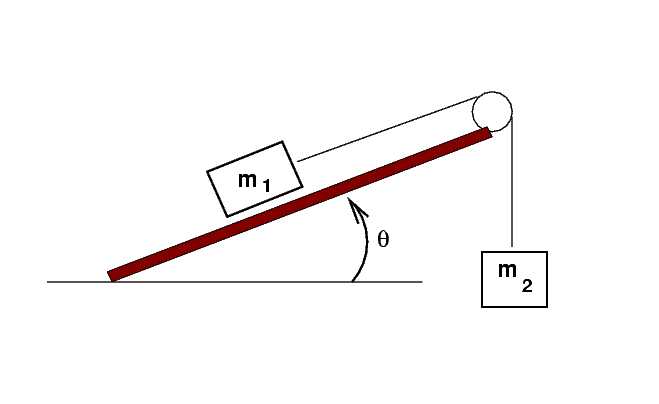
 Copyright © Michael Richmond.
This work is licensed under a Creative Commons License.
Copyright © Michael Richmond.
This work is licensed under a Creative Commons License.
The goal of today's experiment is for you to determine
Clean your track gently with a damp paper towel, then dry it off. Place a "friction block" on the track so that wide face of the block covered in fabric lies on the track. Connect this block to a hanging mass via a pulley.

Add mass to the block in the following manner:
Now, tilt the entire track until you find the angle theta at which the block just barely does NOT slide up along the track. Do not use the protractor to measure this angle. Place stuff around the track so that it doesn't slide or move. You will need to keep the angle constant for the rest of the experiment.
Need some clues?
The next goal is to find the coefficient of kinetic friction, which must involve motion. Transfer 90 grams from the block to the hanger; this may cause the block to slide slo-o-o-wly up the track. If the block isn't sliding, transfer small bits of mass, just 1 grams or 2 grams each time, until it does slide smoothly but slowly. Eventually, you should reach a point at which the block slides slowly but smoothly up the ramp, accelerating as it goes. Call this your starting point.
Measure the time it takes the block to slide a distance of L = 70 cm up the ramp. Make several trials so you get some idea for the uncertainty in this measurement.
Now, transfer little bits of mass at a time from block to hanger, and each time measure the time for the block to slide up the ramp. Make a table of your measurements.
Eventually, the block will slide so fast that you can't measure the time very well. Stop the experiment when that happens, or when the time reaches 2.0 seconds, whichever comes first. You should have good measurements for at least 4 or 5 different values of hanging mass m2; if you have more values, that's even better.
Need some clues?
Each student must submit his own lab report at the start of our next class. The lab report must contain
I will judge each report on a number of criteria, which include grammar, spelling, and neatness.
 Copyright © Michael Richmond.
This work is licensed under a Creative Commons License.
Copyright © Michael Richmond.
This work is licensed under a Creative Commons License.